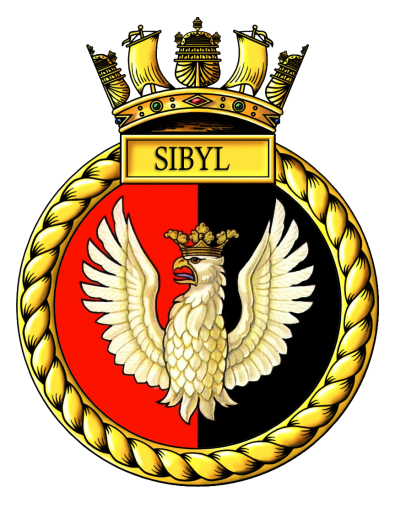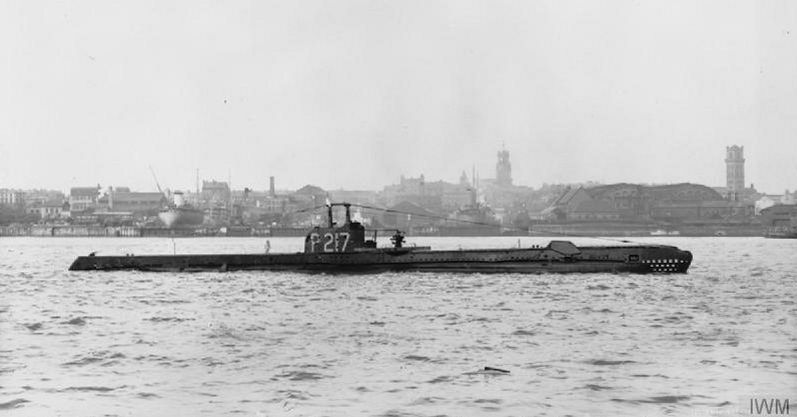S-Class Submarine

Battle Honours
St Kitts 1782
Forte 1799
China 1856-60
Sicily 1943
Aegean 1943-44
Specifications
Builder: Cammell Laird Shipyard, Birkenhead, United Kingdom
Displacement: 814 tons
Length: 217 ft
Beam: 23 ft 8 in
Draught: 11 ft
Propulsion: 2 × 950 bhp (708 kW) diesel engines, 2 × 650 hp (485 kW) electric motors driving two propellers
Speed: 14.75 knots (16.97 mph; 27.32 km/h) surfaced. 9 knots (10 mph; 17 km/h) submerged
Range: 7,500 Nautical miles surfaced (8,600 mi; 13,900 km) at 10 knots (12 mph; 19 km/h) 120 Nautical miles submerged ( 140 mi; 220 km) at 3 knots (3.5 mph; 5.6 km/h)
Armament: 6 × bow & 1 stern 21 in (533 mm) torpedo tubes – carried 13 torpedoes or 12 mines; 1 × three-inch (76 mm) gun (QF 4-inch deck gun; 1 × 20 mm Oerlikon AA gun; 3 × .303 calibre machine guns
Crew complement: 48
Commanding Officers
Lt. Ernest John Donaldson Turner, DSC, RN Jun 1942
Lt. Philip Henry May, RN 13 Jan 1944
Lt. Peter Scott Beale, RN 19 Jan 1944
Lt. Ernest John Donaldson Turner, DSO, DSC, RN 18 Feb 1944
Lt. Ronald Westlake, RNVR 27 Jun 1944
Lt. Huston Roe Murray, RN 5 Jul 1944 - 12 Dec 19451
Related items
None
Reminiscences
None
Gallery
None
H.M. S/M SIBYL
PAGE UNDER CONSTRUCTION
Read aloud

Image copyright IWM (FL 19022)
History
P217 was ordered from Cammell Laird Shipbuilders, Birkenhead, on April 4th 1940, one of the batch two boats ordered as part the third group of S class submarines for the Royal Navy. Her keel was laid down on December 31st 1940. She was launched on April 2oth 1942.
On completion of her builder’s trials P217 departed for Holy Loch on August 12th 1942, arriving the following day. While at Holy Loch she was to conduct Torpedo, Gunnery, Bombardment, D/F and RDF exercises and performed simulated day and night attacks, both submerged and surface actions. She would also undergo trials at the torpedo firing range at Arrochar.
After completing her full speed trials on the Arran measured mile she commissioned as H.M. Submarine P217 (SIBYL) at Holy Loch on August 16th 1942 under the command of Lieutenant E.J.D. Turner, DSC, RN.
Allocated to the Mediterranean Fleet
H.M. Submarine P217 (SIBYL) departed Holy Loch for Gibraltar on passage to join the Mediterranean Fleet on October 3rd 1942. She sailed in company with sister boat and HMS P228 (SPLENDID), both submarines were ordered to patrol in the Bay of Biscay as part of their passage. P217 arrived at Gibraltar on October 15th.
She returned to the UK at the end of April 1844 to undergo a five-month refit at Blyth commencing on May 11th. She returned to Holy Loch on November 9th 1944 to begin her post-refit workup.
Reallocated to the East Indies Fleet
H.M. Submarine SIBYL departed the Clyde for Gibraltar on March 3rd 1945 on the first leg of the trip to the Far East where she was to join the 2nd Submarine Flotilla based at Trincomalee. She arrived on station on April 21st 1945.
Post War history
After the war had ended SIBYL made a brief visit to Singapore before sailing from Trincomalee on September 28th to return to the U.K. She arrived at Portsmouth on November 25th 1945. She was transferred to the reserve fleet soon after her arrival. She was put up for disposal and scrapped in March 1948.
Last modified: 23 February 2023
Primary information sources
Additional sources:
uboat.net entry for H.M. Submarine SIBYL
Comments (0)